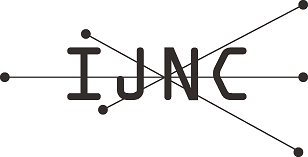Using Optical-Approaches to Raise Energy Efficiency of Future Central and/or Linked Distributed Data Center Network Services
Abstract
Novel optical network architectures are proposed for creating future network services. The first architecture is a centralized approach for higher energy efficiency; it yields a data center- centric metro/access optical aggregation network based on wavelength/time-slot multiplexing. Not only higher application layer functions but also all layer-3 or upper traffic are transferred through the simple metro/access optical aggregation network and switched in a huge centralized giant router at the data center. Its simple optical switching is 200 times more energy efficient and only one electrical router is needed, so power consumption of the network can be reduced ten or twenty fold compared to the existing Internet. The second is service mash-up by linked data through a network that uses broadband optical wire for the IoT era. All service contents, hardware, and software programs are defined as service parts. Optical wire interconnects some service parts and creates new mash-up services in the network. That creates deep network functionality in combination with network and processing functions. Both two approaches are quite simple and energy efficient in comparison to existing Internet, so they can be applicable future data center network architecture.
Keywords
Full Text:
PDFRefbacks
- There are currently no refbacks.
